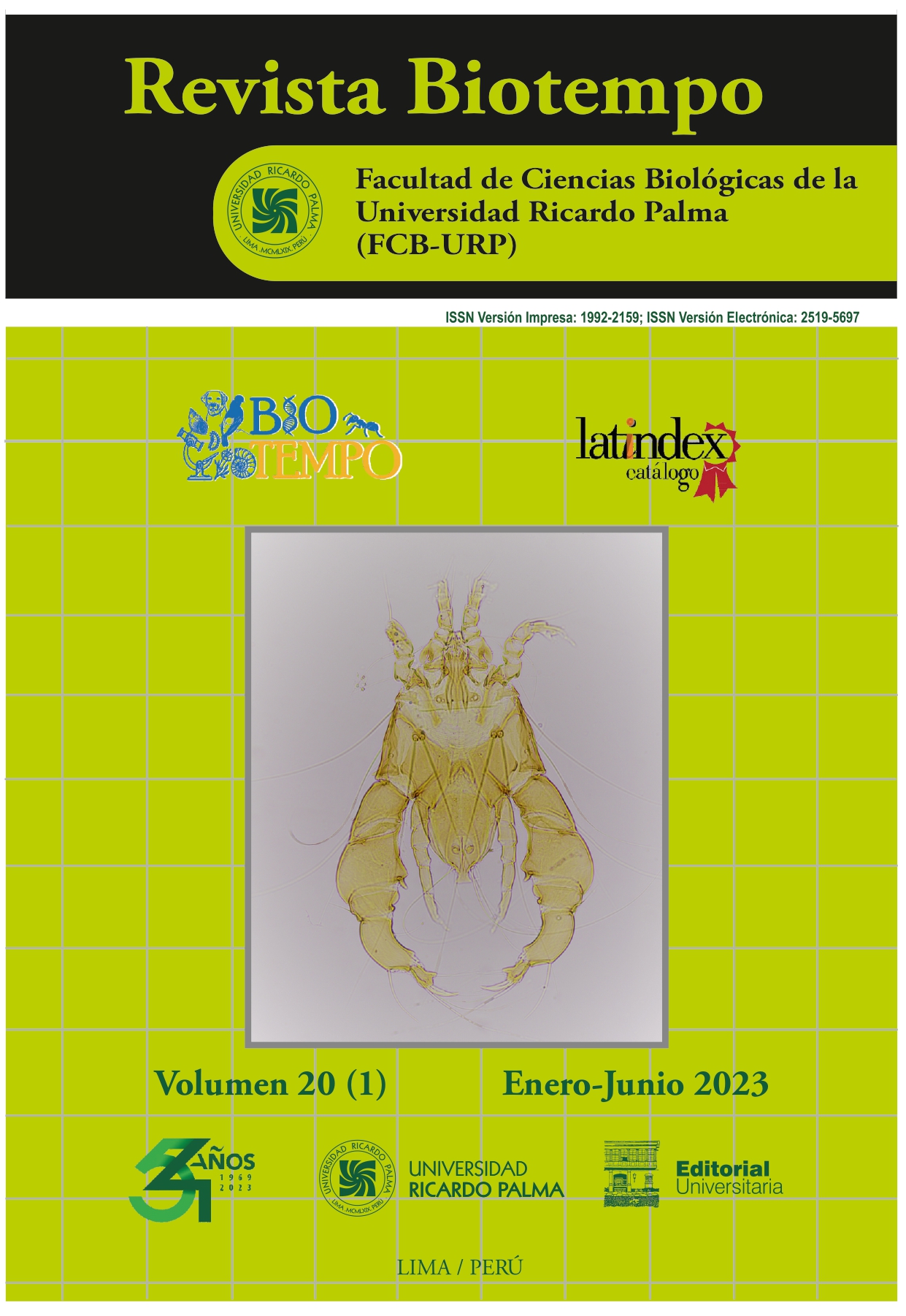Viability of Orestias luteus Valenciennes, 1846 with food dependence on the vitelinus pittle
DOI:
https://doi.org/10.31381/biotempo.v20i1.5722Keywords:
aquaculture, feeding, fish, growing, live diet, prelarvae, survivalAbstract
The objective of the study was to describe the viability of Orestias luteus Valenciennes, 1846 with food dependence on the yolk sac. The tendency to die of prelarvae during the first seven days was increasing. The study was carried out in the
prototype culture laboratory of Fundación Titicaca Perú (FUNTI-PERU), Puno, Perú. As biological material, 100 units of O. luteus prelarvae were used and distributed in two aquariums with 50 specimens each. The environmental quality of the water was controlled by a HANNA HI98194 multiparameter meter (temperature = 12°C-15°C, dissolved oxygen
= 6.0 mg·L-1 - 6.3 mg·L-1, pH = 7.0 - 7.5). Water replacement was performed for 15 days five times with a frequency of every three days. O. luteus prelarvae were not fed for the first seven days and from the eighth to the tenth day were fed an exogenous diet of Artemia salina Linnaeus, 1758. However, on the eighth day when A. salina was fed, the trend was toward a decrease in mortality. It is concluded that the survival of O. luteus decreases after the first three days, even when the yolk sac is present. Likewise, there was a tendency to maintain viability when there was dependence on exogenous
feeding employing A. salina.










